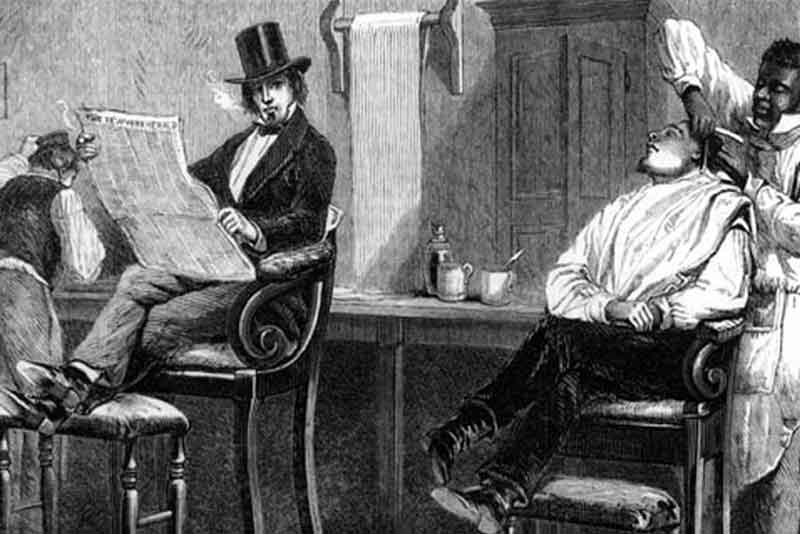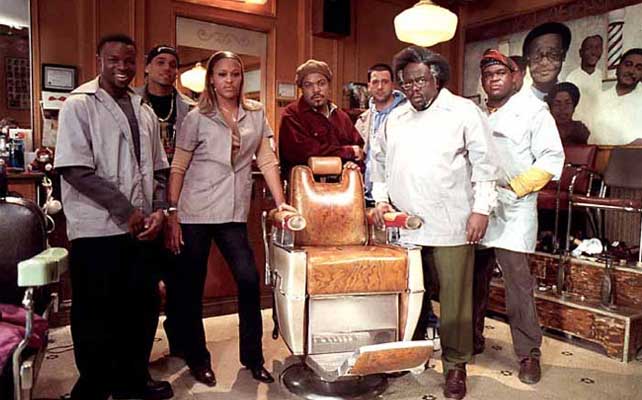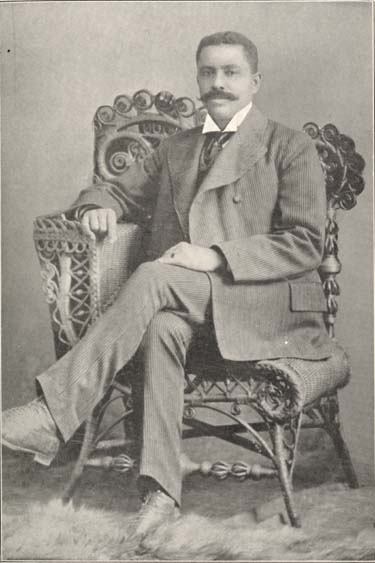Barbers in 19th Century America

In October 1838, ‘The Colored American,’ a newspaper for African Americans in New York, published a letter from a black man who was passing through New York about his experience when he was visiting a barbershop owned by a black barber: “I went out to get my hair trimmed, and my beard shaved, and for this purpose, I visited the store owned by Mr…[sic]A black barber and he refused to touch my face with his razor or my hair with his scissors! When I walked into Mr…’s shop, he had just finished shaving a white man. I asked him as politely as possible if I could get my beard shaved. He turned his eyes to the white man with a slavish and anxious look and moaned – even though slavery had been banned 10 years earlier in New York – “no, my lord, we do not shave colored people.”

The above experience goes against contemporary perceptions, popularized by films such as Barbershop, about black barbershops as public spaces where colored men can gather, socialize, and air opinions without consequences.
The explanation lies in the fact that white men considered the barber profession simple; white men considered themselves positioned to take on difficult, educated professions. However, it is more likely that the profession was downgraded because a majority of the barbers were colored. After all, it takes a lot of skill to use a straight razor properly without bloodshed. And preferably, the white rich also avoided all forms of servility and thus also the service professions. An 84-year-old historian wrote in 1912 that he had never had a barber who was not colored throughout his life.
So how did a majority of barbers come to be black men? Most of them learned the trade during their time as servants or slaves in their master’s plantations. Some enslaved men were ordered to perform personal duties that included shaving. A son of a slave told this about his father in an interview: “As soon as he was big enough to be trained for a profession, his master arranged for him to learn to be a barber. The white high-class community liked to have their own barbers, and they wanted them well-trained… ”
Slaves who performed services in the plantations did not generate any income, but they were considered investment objects that could be rented out. When the economy was bad, some owners chose to rent them out to generate extra income. Depending on the city, an enslaved barber could earn between $12 and $20 a month, at today’s monetary value of about $380 to $640. Some of these went to their owners, and the rest were saved by most.
The career ladder for a black barber went from apprentice, journeyman, master barber to shop owner. Some saved money until they had enough to buy their freedom. A barber in Mississippi, William Johnson, had saved enough money to open his own barbershop in 1828. He became so successful that he eventually became financially independent. Other barbers could be so successful that they could start their own insurance companies. The insurance companies of the time did not insure African Americans. A gap in the market that some black entrepreneurs took advantage of. Some companies that these entrepreneurs started still exist today, such as North Carolina Mutual, founded by John Merrick, who was born a slave.

Before the American Civil War, black barbers groomed mainly rich white men. Colored customers were not allowed to get haircuts in these stores. Mostly because white customers did not want black customers next to them. It was considered symbolic of being too equal, so barbers surrendered to the wishes of their white customers. A problematic choice for many colored barbers but still a rational decision as African Americans at the time did not have much disposable income.
In the late 19th and early 20th centuries, a wave of immigrants from German, Irish and Italian barbers arrived. And these did not care about the racial stigma that followed the barber profession. In parallel, the Jim Crow laws were intensified, the purpose of which was to maintain segregation between blacks and whites (e.g., blacks were not allowed to use the same buses as whites or had suffocated suffrage). Many young black barbers, born after the Civil War and not having the same connection to society as their predecessors, chose to open barbershops in areas with a high proportion of black population.
Today, there are still barbers who almost exclusively cut and trim men of color. Today, this is justified because people of color often have curly hair growth that must be cut in a special way to get a good result.
Read more .. “Cutting Along the Color Line” by Quincy T.Mills